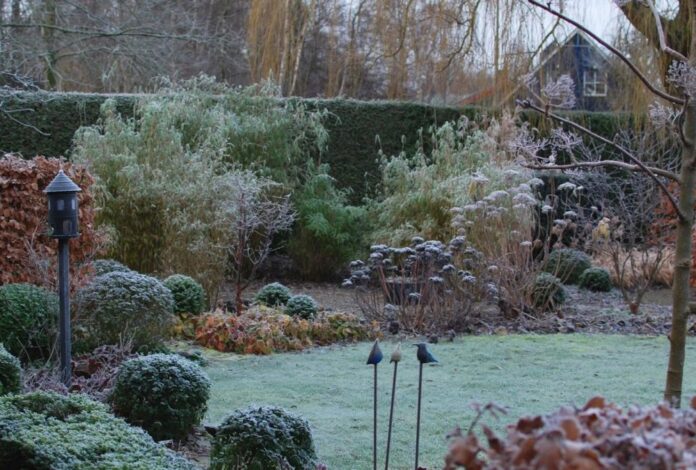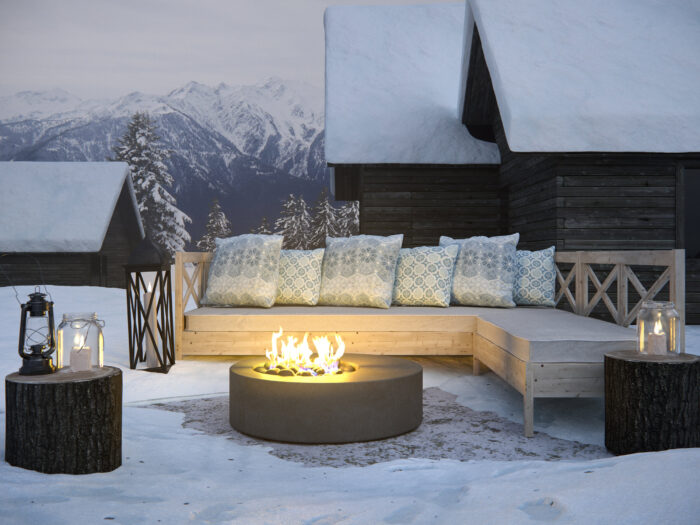
As the weather gets colder, it is easy to get negligent when looking after your garden in the winter. Many people simply abandon their gardens during this time, outside of raking up leaves, and choose instead to revitalise their space during the spring. However, there is plenty you can do to make the most out of these colder months, helping you to maintain an attractive, well designed outdoor space. In this article, we will explain in detail how to go about looking after your garden in the winter. Let’s take a look.
Reassess and Redesign
Sometimes it can be overwhelming to think about how to plan your garden space, especially if you are surrounded by your current planting themes. Thankfully, the winter months allow you to completely reassess your garden designs, as it highlights your garden at its most bare and skeletal. This can help you to see more clearly where the spaces and gaps in your garden are, and redesign accordingly.
With all the leaves fallen, why not take the opportunity to prune away any unsightly or irritating branches that are impeding on your garden design? Similarly, planting new trees or flowers to fill in the empty spaces can result in your garden feeling much more populated during the spring and summer months.
Fallen Leaves

One of the biggest deterrents that prevent people from spending more time in their garden during the winter is the added hassle of fallen leaves. If left alone, fallen leaves can become incredibly slippery to walk upon and simply just visually unappealing, transforming your garden into a grey-brown sludgy mess. It is of little wonder that many people prefer to allow their garden to fall into disrepair and instead tackle it with a “spring clean.”
Despite this, there are many advantages to properly looking after the fallen leaves in your garden. Raking up your leaves on your lawn can help to filter away other wastage and weeds, such as moss. Collecting and storing fallen leaves is a great way to create your own compost for planting in the spring and summer. Similarly, mowing over fallen leaves whilst they are dry can create a natural soil conditioner, helping to fertilise your lawn.
Weather Proofing
If you don’t want to have to maintain your lawn constantly and want something a little more low-maintenance, you may decide to switch out to an artificial grass lawn instead. Not only will a hard-wearing, good quality fake grass lawn maintain its freshly cut green shape all year round, but added drainage holes and resilient materials will make it easier to look after your outdoor space in the winter months.
When designing your outdoor space, it is a good idea is to choose materials that will withstand the elements. Certain garden designs may look fantastic in the spring or summer but can quickly appear incredibly unkempt and unsightly if not cleaned or maintained properly. For example, timber decking and fencing will need to be properly painted, stained, and fixed with preservatives before the winter, otherwise it may fade and eventually rot as it absorbs more moisture in the colder seasons.
An alternative to using timber is investing in more naturally study materials, such as stone patio slabs. In the winter, if not protected by an outdoor shelter, these will have been cleared of any leaves to prevent any falls. Composite decking is another great solution for weatherproofing, as it is made from recycled timber and plastic fibres. This makes it much more slip resistant than its timber counterpart, retaining the visual appeal of wood with the more rigid sturdiness of plastic.
Hedgerows

Not being too liberal with the garden shears is an effortless way to ensure that more wildlife is protected during the winter months. Keeping your borders more open and not sealing gaps in your fences will help to encourage more visiting animals in your space.
For example, more overgrown hedgerows help make them an ideal safe, secure, warm hiding spot for small animals such as hedgehogs to hibernate. Be careful when raking or clearing fallen leaves in the autumn and winter too, as hedgehogs have been known to sleep during these piles.
Winter Planting
If you are new to gardening, you may be surprised to learn that there are plenty of plants and flowers that can be easily grown in the winter, including evergreen trees, daffodils, snowdrops, and pansies. As the warm, inviting autumnal tones slowly start to transition into the bleaker greys of winter, adding a pop of vibrant colour into your garden is an ideal way to make your garden feel a bit more sunny and cheerful.
Certain plants even thrive during the winter, and it is encouraged that you plant them during the colder seasons. For example, spring bulbs are a best planted in around September and October. When looking at the gaps left in your garden, it may be a perfect chance to fill in these spaces with spring bulbs, allowing your garden to truly flourish and come alive as the weather starts to get warmer.
Outdoor Spaces

Outdoor rooms or shelters are an interesting way to enjoy more time in your garden space without being too cold or uncomfortable. You can create a permanent outdoor space, such as a shed or a pergola, or even a fully constructed, insulated outdoor studio. A more rigid structure can help the space feel more like a perfect escape, especially if filled with warm seating, such as an outdoor sofa.
If you do not want to make a full room, arranging a modern, smart seating area underneath a warm, overhanging patio heater can help you to still reap the benefits of the fresh air without getting chilly, and allow you to entertain guests in an outdoor environment. A more natural way to create a focal point rather than a patio heater is to install or purchase a fire pit of chimera. There are very few things that help you feel more connected to nature than a well-constructed fire.
To conclude, looking after your garden in the winter can be an incredibly rewarding series of tasks to undertake, allowing you to make more of your outdoor space the whole year around. Investing your time into your garden in this way, even as it gets colder, can prevent your space from becoming something you can only enjoy seasonally. We hope this article has given you more ideas as to how to best look after your garden in the winter, to allow you to make the most of your space.
















